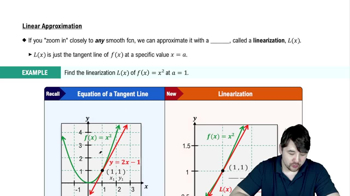Simplify the difference quotient (ƒ(x)-ƒ(a)) / (x-a) for the following functions.
ƒ(x) = (1/x) - x²
 Verified step by step guidance
Verified step by step guidance Verified video answer for a similar problem:
Verified video answer for a similar problem:



 5:13m
5:13mMaster Slopes of Tangent Lines with a bite sized video explanation from Patrick
Start learning